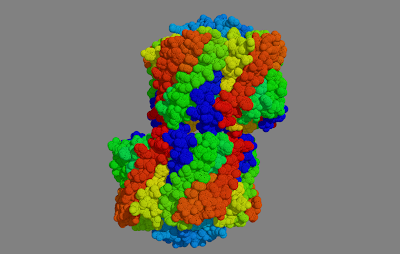Perhaps you’ve recently heard that Google is going to give Kansas City ultra-high-speed internet service. They are helping internet service providers offer internet to everyday users at one giga-bit per second. This speed is ridiculous! Well, for technology, this is impressive. But, for the functions happening in our body, this really isn’t unreasonable. In fact, the protein Aquaporin has always handled speeds this high. It is capable of channeling 10,000,000,000 molecules of water each second! 10,000,000,000 molecules of water each second!!!
And this is an important thing to accomplish. As you might remember from basic chemistry, the diffusion of water across the plasma membrane was important enough to give it a unique name: osmosis. But, unlike plasma membranes, which allow other molecules like oxygen and carbon dioxide through, aquaporins are very uniquely designed for water molecules. To put things into context, a lipid plasma membrane is able to hold water at a concentration of 1 ppm. This is really, quite a low figure!
Aquaporins are crucial to our bodies for functions other than the mere ‘transportation’ of water. Aquaporins allow cells in our lungs and throat to excrete water vapor, keeping our respiratory system from drying out. Aquaporins in plant roots and kidneys allow cells to absorb water at elevated rates. Some aquaporins even keep your eyes from drying out.
Aquaporin actually makes an appearance in the plasma membrane of every single one of our cells! Being a membrane protein, it was rather difficult to develop a crystal structure, but since that was just recently accomplished, the future is bright. Manipulation of Aquaporin has implications for water purification, drug delivery, nutrition, and even fuel cell applications. So, a vote for Aquaporin is a vote for the future!






